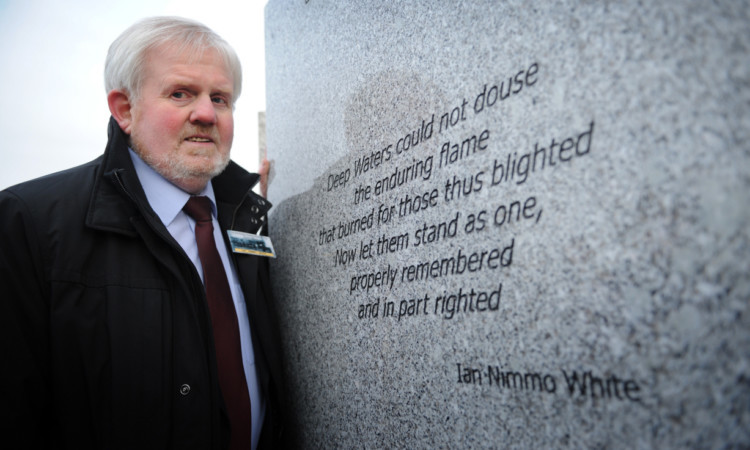When memorials to the Tay Rail Bridge Disaster were officially unveiled at Wormit and Dundee last year to coincide with the 134th anniversary of the tragedy, it was to honour the 59 souls “known to have died” in the disaster of December 28, 1879.
Now, the secretary of the Tay Rail Bridge Disaster Memorial Trust, Ian Nimmo White, is controversially hoping to finally lay to rest any suggestion that there were more than 59 victims.
Over the years there have been many diverse claims as to the final death toll.
The most popular figure is 75, promoted most notably by author John Prebble in the High Girders.
There are museums that display literature to support the claim and, following the erection of the giant granite blocks carrying the 59 names in December, there are some who still dispute this figure.
In the months since the memorial ceremonies, Mr Nimmo White has been continuing to investigate and has now challenged anyone to disprove his theory that there were indeed only 59 dead.
He believes the figure of 75 may have come about because, when an inquiry was held in Dundee after the disaster, it emerged that Robert Morris, the station master at St Fort had 75 tickets in his drawer but Mr Nimmo White believes these may have been an accumulation of the ill-fated train and a train that crossed safely earlier.
He told The Courier: “There was good reason why that figure of 75 was quoted. It was not just gobbledygook. But I believe it was an oversight.”
Mr Nimmo White said Mr Morris took the tickets to the inquiry in Dundee but these were returned afterwards. Mr Morris emigrated to New Zealand after the disaster and, in the 1980s, a collage of the stubs was donated to the Barrack Street Museum in Dundee by the family. Mr Nimmo White said he had investigated these tickets and it was clear that no differentiation could be made between tickets from different trains as there was no time or date stamp on them.
He added: “Of the 59 known to have died, 46 bodies were found. A further 13 mainly women were placed on the train by their families but the bodies were never found. Their Victorian dresses probably took them straight to the bottom.
“It’s ridiculous to suggest there were a further 16 people lost on the train because there were never reports of 16 other missing people.
“I can’t prove this but I challenge anyone to prove there was a 60th fatality let alone a 75th.”
